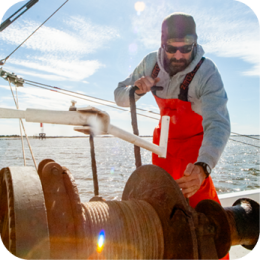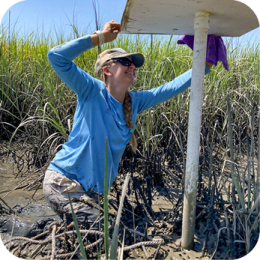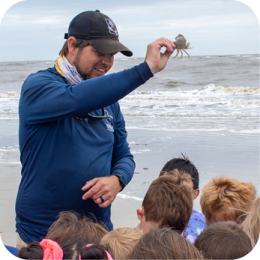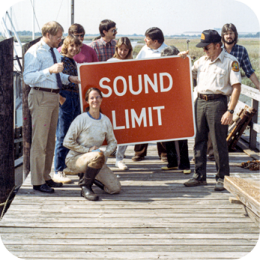Tarpon (Megalops atlanticus) is one of Georgia's most charismatic and sought-after gamefish species. These powerful fighters pose an exciting challenge for even the most experienced anglers, and following some simple tips will help keep them around for generations to come.
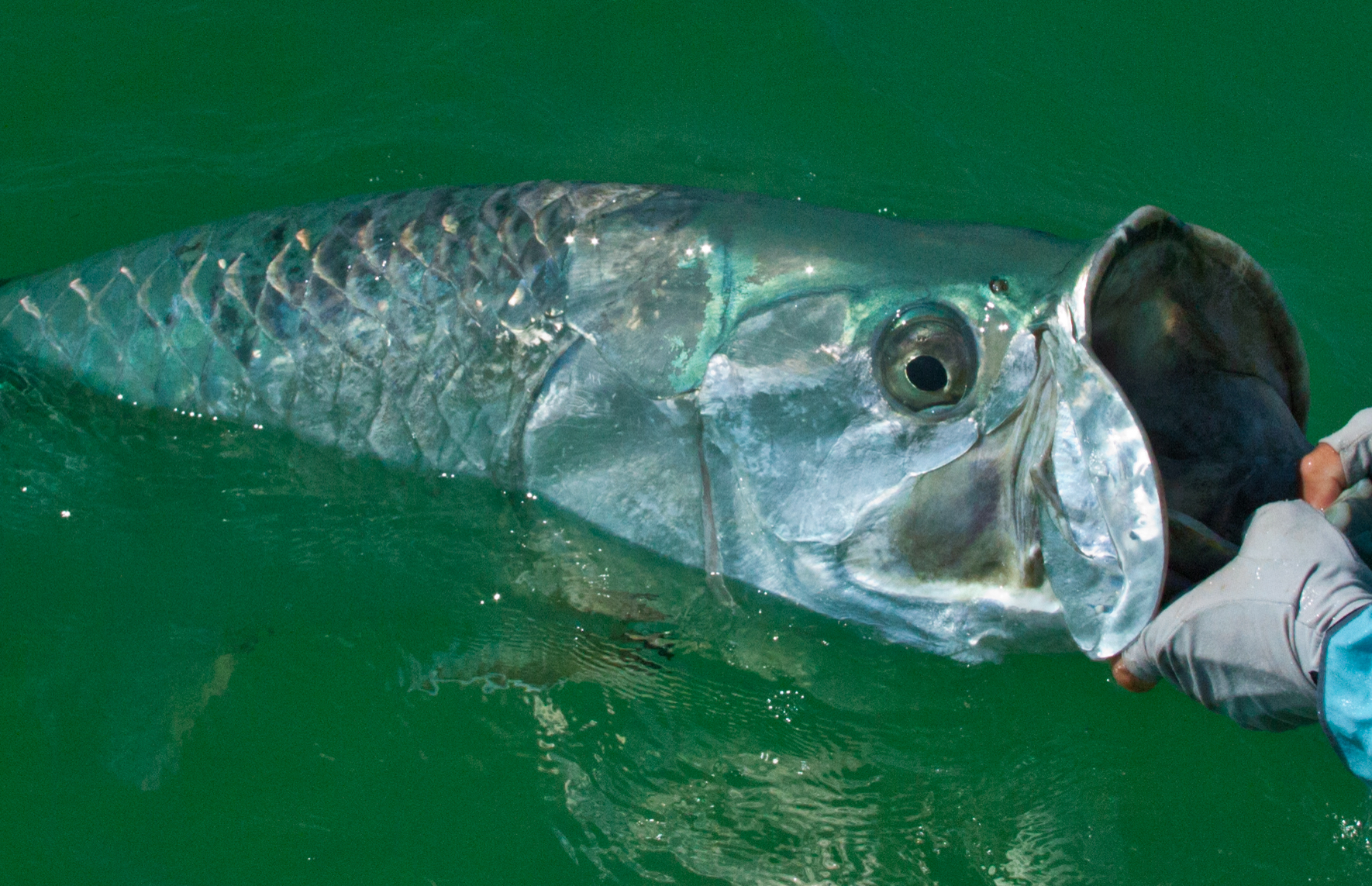
Life History
Description and Diagnostic Characteristics: Bright silvery sides with dark green or brown along the dorsal side. Only has one dorsal fin, with a lone streamer coming off the last ray. Has huge scales and a large upward-facing mouth.
Size: Normally can range from 40-280 pounds with females being larger than males. Maximum length of 100 inches.
Age at Maturity: 7-13 years old
Range: Florida to Long Island, straggling to New England
Habitat: Live in coastal waters in estuaries, bays, mangrove-lined lagoons, and rivers. Can be found in freshwater or oxygen-poor waters.
Angling Information
Bait and Tackle: Large variety in fish sizes so a wide variety of tackle can be used, from light saltwater to stout. Fly-fishing can also be used. Live baits such as Mullet, Menhaden, Pinfish, Spot or even crabs can be used.
Fishing Method: Still fishing, casting, drifting, trolling
Food Value: None
State Regulation
Daily Limit: 1 (no sale)
Minimum size: 68″ FL

Best Practices
Hooks
- Use circle hooks
- Avoid stainless-steel hooks
- If a fish is gut or deep hooked, cut the line as close to the hook as possible. This will limit injury to the fish. Most fish are able to reject the hook over time, and using non-stainless steel hooks will allow the hook to dissolve over time
Catch and Release
- Tarpon have almost no food value, and releasing them can help conserve the stock for generations to come
- Minimize fish handling. Handling fish can remove their protective slime
- If you do handle a fish, do so with wet, clean hands
- Grasp fish with your hands, not a gaff
- When handling a fish out of water, support its head and underside
- Minimize exposure to air
- Do not use lip-grips, which can injure fish
- If you are planning to take a photo, get the camera set up before removing the fish from water
Fight Time and Predators
- Keep fight times to a minimum. Overplaying the fish can exhaust it, making it more vulnerable to predators like sharks
- Use the proper tackle
- Watch out for sharks and other predators; If sharks begin to appear, find another area to fish
General Tips
- You can use the Bonefish & Tarpon Trust's Tarpon Weight Calculator to estimate the fish's weight
- Don't touch or hold a fish by the gills; This can make injure the fish and make it hard for it to breath
- To revive a tired tarpon, hold it upright and allow water to pass over its gills
Video Resources from Bonefish & Tarpon Trust
Visit the Bonefish & Tarpon Trust for additional videos.
Coastlines Georgia magazine
Check out the feature article in this edition of Coastlines Georgia for more tips and information about tarpon fishing in Georgia.


